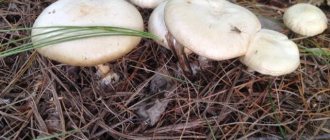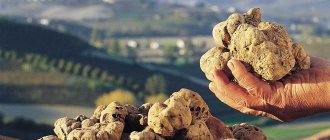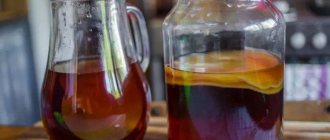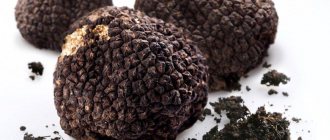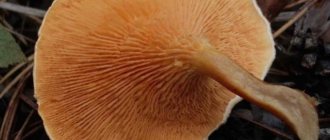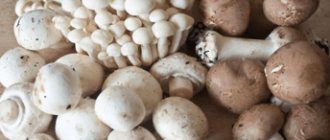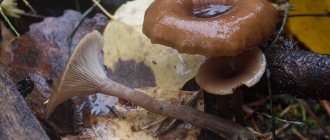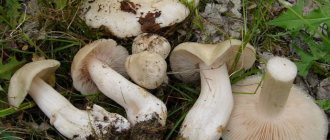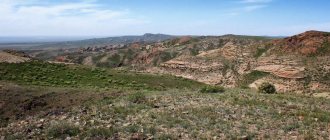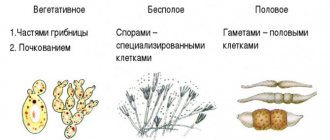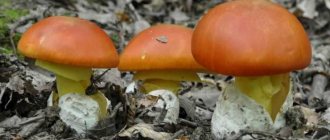Imrus is a highly winter-hardy apple tree variety . It was obtained in 1977 by crossing the Antonovka variety of ordinary and standard hybrid form from winter varieties.
In 2000, the plant, having passed state tests, was recommended for cultivation in different regions of Russia.
In order to avoid problems during the development and growth of a plant, it is necessary to know all the subtleties and nuances of care: from the initial stage of planting a seedling to the appearance of the first harvest.
Characteristic
Peculiarities
The apple tree has gained popularity among gardeners due to the following features :
- High immunity to powdery mildew and leaf and fruit scab;
- High yield, reaching about 30 kg per apple tree;
- Stable fruiting;
- Long shelf life of fruits;
- High consumer and commercial qualities of fruits.
The disadvantage of this variety is the thin skin of the ripened fruits.
Tree height
Fruit tree of medium height. On average about 3 meters.
Crown width
The crown of the apple tree is spreading , often widely - round in shape, of medium density. When moving away from the trunk, the skeletal branches form an acute angle with it. The branches are located at a fairly large distance from each other and have a curved appearance.
Apple tree variety Imrus.
Annual growth
The location of the branches of the fruit tree is vertical , for this reason the growth of the apple tree reaches up to 10 cm in height per year.
To avoid this, it is necessary to ensure their correct formation and deviation to a horizontal position.
Important! The more intense the growth of the apple tree, the less fruiting.
Productivity
The productivity of an apple tree depends on the climate of the region and proper care.
The Imrus apple tree can be considered the most productive . In the period from 4 to 6 years, the tree bears about 20 kg of apples.
Tasting assessment
- The fruits are flattened and medium in size.
- The skin is oily without a waxy coating, rather thin.
- Apples are greenish or light yellow in color.
- The pulp is cream-colored with a fine-grained structure.
- It has an aromatic odor and a juicy sour-sweet taste.
- Apple pulp contains large amounts of ascorbic acid, sugar, pectin and vitamins.
Winter hardiness
The Imrus apple tree is a frost-resistant variety that is unpretentious to climatic conditions.
Tolerates early frosts well.
Thanks to hardening after a long and snowless winter (with proper preparation), fruiting next year occurs on time.
Resistant to scab and fire blight
The Imrus apple tree variety is highly resistant to scab damage .
However, due to the fault of gardeners, some diseases arise to which apple trees have no immunity.
Such diseases include:
- Bacterial burn . Appears as a result of high humidity. The damaged area of the bark is removed and treated with a disinfectant.
- Black cancer. Appears as a result of improper tree care. The control measure consists of removing damaged branches and disinfecting the plant.
Lifespan
The lifespan of an apple tree grown from a seed is more durable and ranges from 70 to 80 years.
Attention! When obtained from layering, root shoots or cuttings, the lifespan is significantly reduced.
Description of fruits
Most often, apples of this variety are of medium size, and the weight of the fruit varies from 0.14 to 0.18 kg. The shape is pronounced flattened or turnip-shaped. There is slight ribbing of the fruit. The skin is not thick enough and smooth, has a glossy tint and a slight oiliness. There is no wax coating or rustiness at all.
At the stage of removable ripeness, the fruits of this variety have a greenish main color. At the stage of consumer ripeness, the color of apples is light yellow. There is a significant number of small, clearly visible subcutaneous points. The peduncle is of medium length and thickness, slightly curved. The seed material is brown, medium in size, well-shaped.
Reviews
Kotova Natalya Dmitrievna. With. Mikhailovka. Altai region . "Hello. I live in the Western Siberian region of Russia in the Altai Territory. Several years ago, our family decided to move from Barnaul to the countryside due to the child’s frequent illness. Having bought a house with a large plot, I immediately planned where we would have a vegetable garden and where the garden would be.
Flowering of a young apple tree of the Imrus variety.
There were no difficulties when planting and harvesting vegetable crops. Things didn’t work out right away for me with garden crops. Having planted 3 different varieties of apple trees, I looked after them for years and waited for the first fruiting.
The first harvest occurred 6 years after planting the crop. We were very upset by the number of apples on the trees. We were not pleased with the taste either. Getting upset, we decided to clear the garden of these plantings and plant berry bushes in this area. A year later, I came across an article about the Imrus apple tree.
Having carefully examined the photo and description of the variety, all the advantages and characteristics of the apple tree, I decided to try growing this crop again.
Because of my first bad experience, I was afraid to purchase several seedlings and bought only one. Having chosen a suitable place, she landed.
The seedling took root without any difficulties. It is unpretentious and does not take much time to care for. At the 4th year our little tree bore fruit. We harvested little, but we were pleased with the taste. The apples are very juicy, tasty, with a predominance of sourness.
The next year the entire tree was strewn with fruits. Thanks to their storage properties, children enjoy eating them fresh for a long time.”
Smirnov. A.S. village of Pirovskoye, Krasnoyarsk region. “I have been gardening for a long time and am a proponent of farming. I grow fruit trees, vegetables, berries, flowers. I also try to involve friends and neighbors in this cause. Since I live in the Krasnoyarsk Territory near the city of Lesosibirsk, climatic conditions cause some difficulties for my hobby. Not all varieties of cultivated trees take root here. It is necessary to choose winter-hardy and unpretentious crops.
I was very pleased with one of these varieties, the Imrus apple tree, which I bought after seeing the description and photo.
It is immune to harsh climatic conditions, is not afraid of various diseases, and bears fruit abundantly. Apples can be stored for quite a long time. And what taste!!! With the onset of autumn, neighbors line up to try the liquid fruits.”
Ulyana. Novosibirsk region. "Hello. In our village, everyone has their own garden and plot. Almost all residents have apple trees and wildflowers. There are more than seven varieties of this tree on our site. So we harvest every year, although not all varieties bear fruit regularly. Through testing with neighbors and in my garden, I discovered that my Imbrus apples are the most delicious.
Juicy, with a sweet and sour taste, they can surprise the most picky guest. And if you pick such an apple from the branch and eat it right away, you get an unforgettable pleasure. I use these apples to make charlotte and pies.
Apples with sourness are in perfect harmony with vegetable salads. You can cook a very tasty compote from dried sour apples. For the winter I make preserves, jams, jams. I also prepare a large amount of pasteurized juice. After a village bathhouse, a glass of cold apple juice can quickly bring you back to your senses.”
Preparing for the winter season
As mentioned above, the variety has unique frost resistance and is not afraid of spring temperature changes. Therefore, in preparation for the winter season, it is enough to carry out planned autumn work.
Harvest and storage
Harvesting begins in mid-September, at which time the apples reach technical maturity. After 30-40 days, the taste of apples is fully revealed, and they are ready for fresh consumption.
Fruit picking should be done during the day in warm and dry weather. Since the fruits of the “Imrus” variety have a very thin skin, they are removed exclusively by hand, trying to preserve the stalk. Place the apples in disinfected wooden boxes lined with food paper. Each layer is separated by a paper layer.
The fruits laid in this way are moved to a room with a temperature of +2 +5°C. You can store apples without loss of taste until February. Subsequently, they lose their characteristic elasticity and juiciness.
Features of planting and care
Landing
Place
When planting an apple tree, you need to choose the right place:
- The tree needs good lighting;
- Planting should be done in places where water does not stagnate;
- The soil should be loamy, sandy loam and breathable;
- Remoteness from other cultivated trees.
Deadlines
This variety is planted in the fall . The ideal time is from mid-September to mid-October.
General rules
To quickly root the seedling, a prepared hole about 80 cm deep is fertilized with humus or compost. Then they are planted so that it is 6 cm above ground level.
Attention! In no case should you deepen the transition of the root into the trunk by more than 6 cm.
Growing
After planting the seedling, it is necessary to monitor its development:
- Old and non-viable branches must be removed.
- If cracks and wounds occur on the tree, they need to be healed using varnish.
- For harsh regions, it is recommended to mulch around the trunk.
Agricultural technology
A year after planting the tree, it is necessary to cut off all the flowers. This will contribute to better survival.
In the future , when the first harvest appears, it is necessary to carry out rationing. It consists of removing half of the apples, 1 cm in size. Thanks to this, the apples will be larger, sweeter and the tree will not lose strength before winter.
Watering
In the first year of planting, it is necessary to monitor the soil. The soil should never dry out, so water the seedling regularly.
In subsequent years, watering is carried out only in hot weather and during the fruiting period, when buds are simultaneously formed.
Water 2 times a day, morning and evening, at the rate of 1 bucket per tree.
Crown trimming
Pruning and crown formation.
With proper pruning, the yield and quality of apples increases , and it also helps prevent the occurrence of various diseases.
Pruning is carried out every year in early spring before the buds open.
Pollinator varieties
The variety is considered practically self-sterile. During the process of self-pollination, only about 15% of the fruits are formed.
Specific pollinators for this plant have not yet been identified. To pollinate the Imrus variety, other apple crops are needed on the site.
Agricultural technology
Work on growing this ornamental plant should begin with a careful selection of seedlings. When purchasing, carefully inspect the roots - they should not be dry or damaged. They also carefully inspect the above-ground part - there should be no growths or stains on it.
The stem under the bark is bright green. The seedlings should be without foliage, and the buds should preferably not be swollen.
apple fruit
You need to buy two-year-old seedlings - in this case they will tolerate transplantation well and will not take long to adapt to new growth conditions.
Time to plant young trees:
- in the spring - until the third ten days of April (if frosts are no longer expected);
- in the autumn - until the second half of October.
In the second case, the planting time is calculated so that at least 1.5 months remain before the onset of cold weather. Only in this case will the plants have time to take root properly.
The place where these apple trees will grow should be well lit by sunlight, since in the shade or partial shade the color of the foliage will be less intense. As a result, the decorative effect of the plant will be partially lost.
Should be planted in a sunny area
The soil should not be too dry or waterlogged, so sandstone or heavy clay soil is not suitable for the Royalty apple tree. The best soil for planting is loamy or soddy-carbonate. The close occurrence of crushed stone, limestone and groundwater also negatively affects the growth of the root system.
Seedlings should also be prepared - their root system is placed in a bucket of water a day before. All damaged areas of the underground and above-ground parts of the tree should be removed, and the cut areas should be sprinkled with coal dust.
Preparing the planting hole:
- dig up 7-9 days before the intended planting;
- depth not less than 0.5 m;
- a layer of humus mixed with garden soil and sand in equal quantities is poured onto the bottom of the pit;
- add 2-4 liters of water.
Then the seedling is installed, and its roots are carefully straightened along the diameter of the hole. The roots are covered with soil from above, lightly compacted and watered with a bucket of water.
If more than two seedlings are planted, the distance between planting holes should be at least 6 m.
Interesting! Landscape designers advise planting barberry, lilac bushes, and fieldfare next to the decorative apple tree. And in the foreground bushes of peonies, irises and daisies will look good.
Further care consists of regular watering, loosening the tree trunks and removing weeds. The first watering is done when planting plants - at least half a bucket of water is poured under each tree. The next watering is carried out after 3 days, and then regularly once every 7 days. You should loosen the soil and remove weeds immediately after watering.
Important! Reproduction is carried out by grafting buds or shoots from the mother tree, in which case all species characteristics will be preserved. When grown from seeds, a new plant may not retain its maternal qualities.
Features of ripening and fruiting
Flowering period
The plant blooms mid-early - early to mid-May. The flowers are pale pink, with a saucer-shaped, corymbose inflorescence.
The effect of pruning on fruiting.
Beginning of fruiting
The Imrus apple tree begins to bear fruit 3-4 years after planting:
- The first year, as a rule, the harvest is modest and contains no more than 10 fruits.
- However, every year the yield increases significantly.
This variety has high and annual fruiting.
Fruit ripening
The ripening of fruits depends on the climatic conditions of the regions. It begins in early September and lasts until the first days of October.
Shelf life
The Imrus variety is valued for its transportability and long shelf life. The consumption period for apples is until March. The fruits are stored in dark, cool places .
They are best preserved in wooden boxes.
Advice! Should not be stored in a plastic bag. In the absence of air, condensation forms in the bag, which leads to rotting of the fruit.
Pollination
The Imrus apple tree is a partially self-fertile variety, that is, it is capable of forming ovaries after pollination of flowers with its own pollen , which is characterized by an average level of viability (from 28% to 52%).
As a result, from 6 to 17% of fruits are formed. This method of pollination brings a very low yield, so it is better for the tree to have pollinators - apple trees that bloom at the same time.
In this regard, it is recommended to plant the following varieties near Imrus:
- Freshness;
- Kandil Orlovsky;
- Veteran;
- Memory of a warrior.
But until now it has not yet been established exactly which pollinators will be the best for the Imrus apple tree.
Subspecies and options
Columnar
A special place among early-fruiting apple tree varieties is occupied by a variety with a columnar shape.
These apple trees grow vertically upward and have no lateral branches . If they do form, they must be removed in the spring using pruning shears.
This tree is about 3 meters high and has a trunk covered with a large number of apples.
This subspecies is valued for the following characteristics:
- Abundance of harvest;
- Comfort during care;
- Exotic look.
Dwarf
Dwarf varieties are obtained by adding a rootstock to a regular seedling.
These varieties have gained popularity due to the following qualities :
- Early fruiting;
- Small size, which allows you to plant more trees on the site;
- Easy care;
- Saving on fertilizers.
Semi-dwarf
Semi-dwarf varieties are called apple trees that do not exceed a height of more than 2 meters.
An extremely prolific plant, but has a number of disadvantages :
- The plant is capricious;
- Requires careful care;
- Lifespan 10 years.
Reproduction methods
Own-rooted apple tree seedlings are grown from seeds that have undergone stratification. Imrus seedlings are grown in open ground. More often, the variety is propagated vegetatively using cuttings. They are harvested early in the spring or late in the fall and stored in the basement or refrigerator until the weather warms up. They are planted in a school for rooting.
Cultivation in certain regions.
Moscow region
Among the huge number of varieties of apple trees, it is difficult to choose a suitable variety for growing in a temperate continental climate in the Moscow region.
Summers here are quite hot, while winters are cold. Temperatures in winter in the Moscow region can drop to -30. In summer, there is an alternation of drought with frequent downpours.
The Imrus Apple tree variety is ideal for this region .
Important! With the right choice of planting site, with proper care and timely feeding of the plant, the tree will begin to bear fruit in the early stages.
Belarus
Apple tree with fruits.
The apple variety of the Imrus selection is genetically resistant to a dangerous disease - scab . This makes it suitable for growing in the regions of Belarus.
By following all standard agricultural practices, regular watering and proper planting, regular fruiting can be achieved.
Leningrad region
Conditions in the Leningrad region for growing fruit crops are poor. Poor climate and poor soil do not contribute to good survival and development of the plant.
Gardeners have to reap the harvest with great patience and difficulty . The Imrus breeding variety is recommended for cultivation in this region, as it is resistant to diseases and has high frost resistance.
History of selection
Apples of the Imrus variety were bred using the hybridization method . This variety was developed at the All-Russian Research Institute for Breeding Fruit Crops . In 1996, the variety was allowed for cultivation.
Its development was carried out by: E.N. Sedov, V.V. Zhdanov, Z.M. Serova . Antonovka and the hybrid form QR18T13 were selected . The mother variety was Antonovka.
The hybridization method involves pollination of adult mother trees with the paternal variety.
To serve as the mother sample, trees over 10 years old were carefully selected.
During this experiment, after pollination with variety QR18T13, pollen was collected from 7 experimental specimens.
The next step was re-pollination, during which the breeders managed to obtain seeds of the hybrid variety Irmus.
Before planting in the ground, the seeds were stratified.
During their subsequent cultivation, the mentor method was used for education.
To give the variety good resistance to frost, hardening was carried out in the form of growing in a cold climate.
Legend
Christmas apple variety
Different types of machines are marked in their own way for quick identification and selection of the one needed for a specific circuit or its section. As a rule, all manufacturers adhere to one mechanism, which allows them to unify products for many industries and regions. Let’s take a closer look at the signs and numbers printed on the machine:
- Brand. Usually the manufacturer's logo is placed at the top of the machine. Almost all of them are stylized in a certain way and have their own corporate color, so choosing a product from your favorite company will not be difficult.
- Indicator window. Shows the current status of contacts. If a malfunction occurs in the machine, then it can be used to determine whether there is voltage in the network.
- Machine type. As already described above, it means a shutdown characteristic at currents significantly exceeding the rated current. C is used more often in everyday life and B is used a little less frequently. The differences between the types of electric machines B and C are not so significant;
- Rated current. Shows the current value that can withstand a long-term load.
- Rated voltage. Very often this indicator has two meanings, written separated by a slash. The first is for a single-phase network, the second is for a three-phase network. As a rule, in Russia a voltage of 220 V is used.
- Switch-off current limit. It means the maximum permissible short circuit current at which the machine will turn off without failure.
- Current limiting class. Expressed in one digit or absent altogether. In the latter case, the class number is considered to be 1. This characteristic means the time for which the short circuit current is limited.
- Scheme. On the machine you can even find a diagram for connecting contacts with their designations. It is almost always located in the upper right part.
Thus, by looking at the front of the machine, you can immediately determine what type of current it is intended for and what it is capable of.
